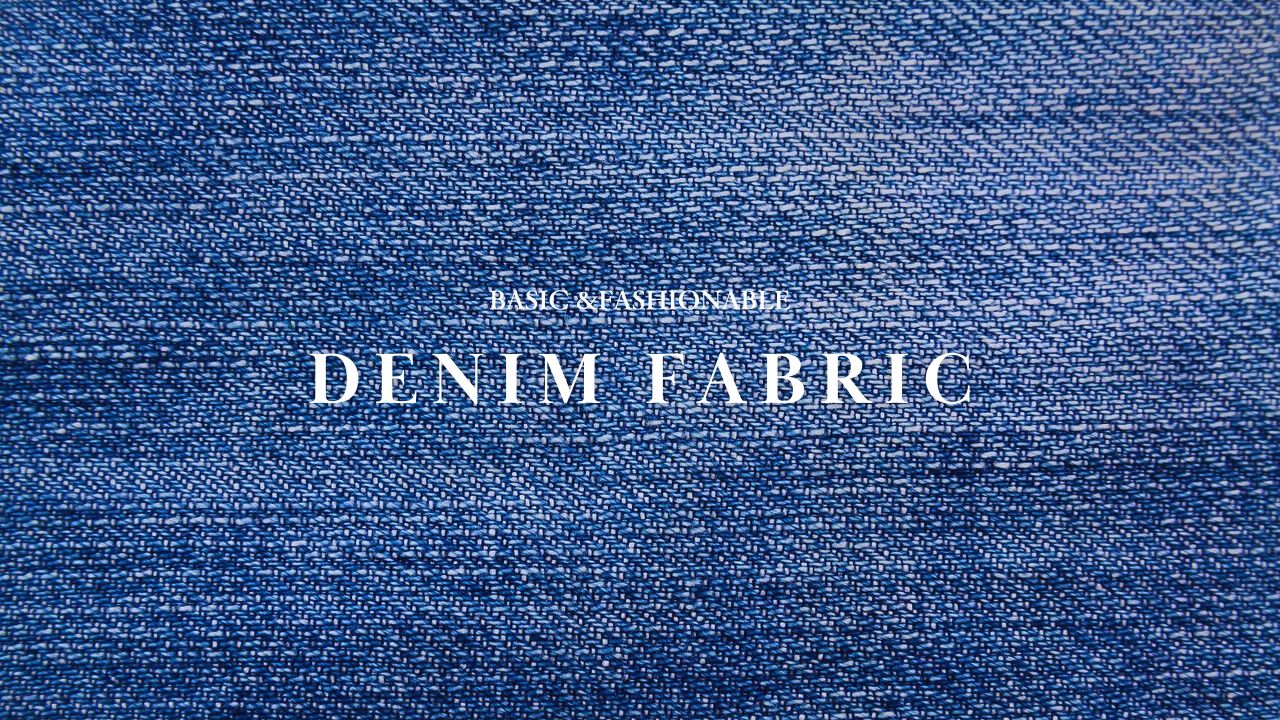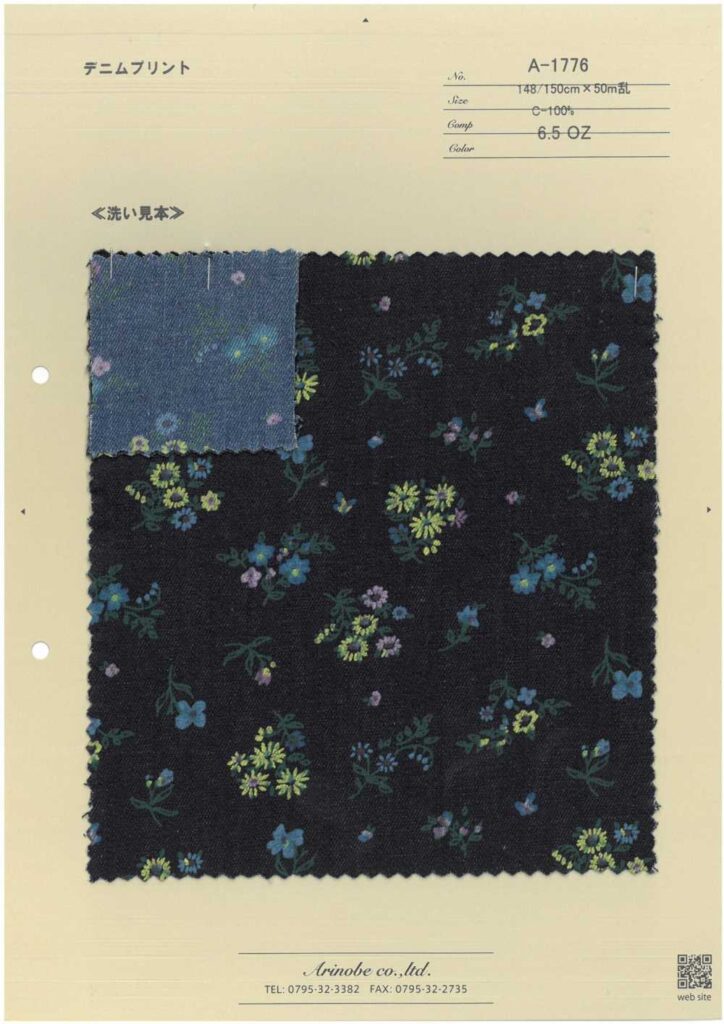Classic material: Denim fabric, things you need to know

Denim has been a staple item in casual styles such as jeans and skirts until now, but as was the case with this year’s spring/summer trend, denim top-and-bottom and items with quirky designs were also available.
Thankfully, we have received many inquiries about denim.
This time, let walk through some basic knowledge about denim.
What is denim fabric?

Denim is a durable fabric made of cotton. It is a twill weave fabric with warp threads of 10 count or higher dyed yarn and weft threads of bleached yarn (white yarn that has not been dyed).
The warp yarns visible from the front side of the fabric are dyed with indigo, so the surface is indigo, while the weft yarns are visible on the back side of the fabric, making it whitish.
However, some colored denim, for example, has the warp threads dyed in colors other than indigo.
Jeans are tailored using this denim. So denim refers to the fabric and jeans refer to the finished product.
The origin of the name “denim

The word “denim” originally came from the French expression “serge de Nîmes,” meaning “twill fabric from Nîmes.
The southern part of France has a warm Mediterranean climate, and at the time of the 19th century, cotton and other crops were being cultivated, and the trade of cotton products within France and to overseas countries was thriving. In particular, the “Nimes” region near the port city of Marseille flourished as a textile production area due to its mild climate and location.
Fabrics from the Nimes region were traded in English-speaking countries such as the United States, and the first half of the name was omitted to make it easier to pronounce, changing the name to “de Nimes,” which eventually became “denim”.
So, where did the word “Jeans” come from, when we said earlier that the products were made of denim?
Jeans are associated with Genoa, Italy.
The trousers worn by sailors from Genoa to the U.S. were called “Genes” or “Genoise,” meaning “made in Genoa.
This is the origin of the modern word denim.
Denim and jeans have been used in France, the U.S., Italy, and many other countries, and have been handed down to the present.
Denim ounces

You may have seen or heard the term “ounce” used to describe denim.
Denim is expressed in ounces, which is the weight of the fabric. In Roman letters, it is written as “oz.
Specifically, it is the weight of the fabric per square yard (1 yard = 91.44cm). 1oz = 28.35g.
Typical denim is around 13 oz. In other words, 1 square yard weighs about 370g.
The larger the ounce, the thicker and heavier the denim.
Types of Denim
Denim can be classified by ounce as follows
Light Ounce: Lightweight denim of less than 10 oz.
Regular Ounce: 10oz or more but less than 15oz.
Heavy Ounce: 15 oz. or heavier denim.
Heavy Weight Ounce: heavier denim over 20oz.
Generally, light ounce is lighter and thinner, and heavy weight ounce is heavier and thicker.
Post-processing
Denim can be processed after it is finished to further change the fabric.
One-wash: The finished denim fabric is washed once. This softens the stiffness of the denim fabric and makes it easier to sew.
Bio-wash: The color fades as if it has been washed many times using the power of an enzyme called cellulase, which breaks down cellulose (the main component of plant fibers). The result is a worn look that gives the garment a vintage-like appearance.
Recommended denim fabrics
![N0410 4オンスコーマデニム[生地] ダックテキスタイル](https://www.apparelx.jp/img/item/OKURA/N0410.jpg)
![VN2202-2 22オンスセルビッチデニム[生地] ダックテキスタイル](https://www.apparelx.jp/img/item/OKURA/VN2202-2.jpg)
![VN2202-2 22オンスセルビッチデニム[生地] ダックテキスタイル](https://www.apparelx.jp/img/item/OKURA/VN2202-2-2.jpg)
7012W Denim Washer Processing 12 Ounces
![7012W 色展開豊富 カラーデニムワッシャー12オンス[生地] 吉和織物](https://www.apparelx.jp/img/item/OKURA/1086421.jpg)
![7012W 色展開豊富 カラーデニムワッシャー12オンス[生地] 吉和織物](https://www.apparelx.jp/img/item/OKURA/1086421-2.jpg)
1500W Denim Washer Processing 10 Oz
![1500W 色展開豊富 カラーデニム ワッシャー加工 10オンス[生地] 吉和織物](https://www.apparelx.jp/img/item/OKURA/1086420.jpg)
![1500W 色展開豊富 カラーデニム ワッシャー加工 10オンス[生地] 吉和織物](https://www.apparelx.jp/img/item/OKURA/1086420-4.jpg)
OWHFK102SB-SO Kaihara Denim 12.5oz
![OWHFK102SB-SO カイハラデニム 12.5oz オーセンティックルックなブラックデニム[生地] 小原屋繊維](https://www.apparelx.jp/img/item/OKURA/1093587.jpg)
![OWHFK102SB-SO カイハラデニム 12.5oz オーセンティックルックなブラックデニム[生地] 小原屋繊維](https://www.apparelx.jp/img/item/OKURA/1093587-2.jpg)
12.5oz black denim from Kaihara, famous for its denim.
This black denim is dyed with sulfide dye.
Conventional black sulfide denim has a small core white area, but this black denim has a large core white area and can be easily washed and processed.

Conclusion
There are many kinds of denim fabrics, and there are a wide range of variations depending on the color and the combination of ounces.
Denim fabric can be used for both classic and unique items. For more denim fabric, please visit ApparelX Denim Fabric page.



